Step Garden
A fitness productivity tracker rooted in social, positive reinforcement
Problem Space
Wearable fitness trackers can be used to empower users to live an active and healthy lifestyle. Our goal is to create a tracker application that links to a basic wearable device, empowering users to be healthier through behavior change.
My Role
- Primary & Secondary Research
- Affinity Diagram
- Empathy Map
- Skyscraper Mental Model
- Storyboard
- Clickable Prototype
Proposed Solution
Overview
Step Garden is a productivity app that grows a plant each day based on a user’s wearable fitness tracker data. Throughout the day, users will receive encouraging messages from the plant and friends they connect with on the app.
Low Fidelity – User Interface
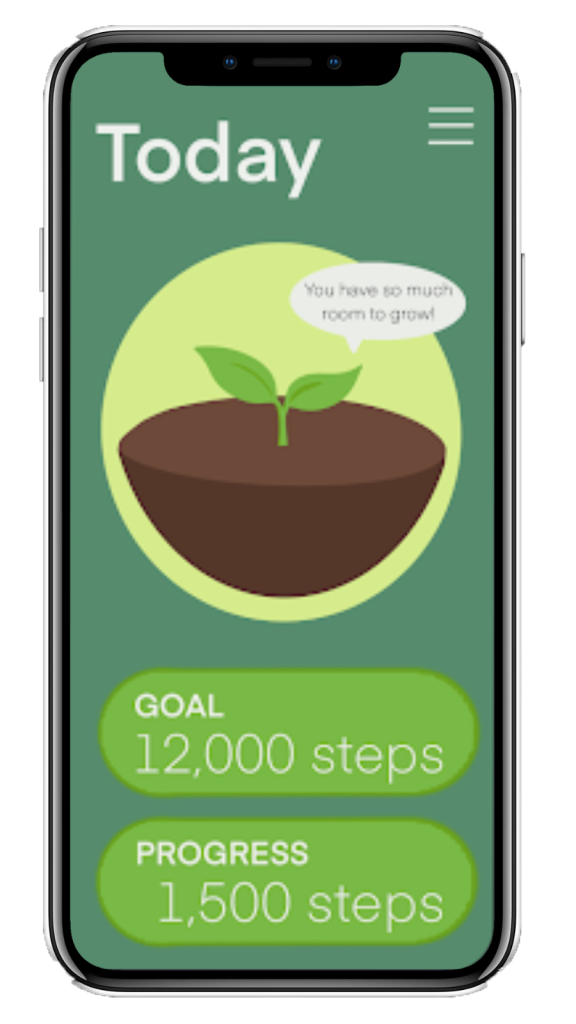
Homepage
See daily growth progress, steps taken, and daily goal
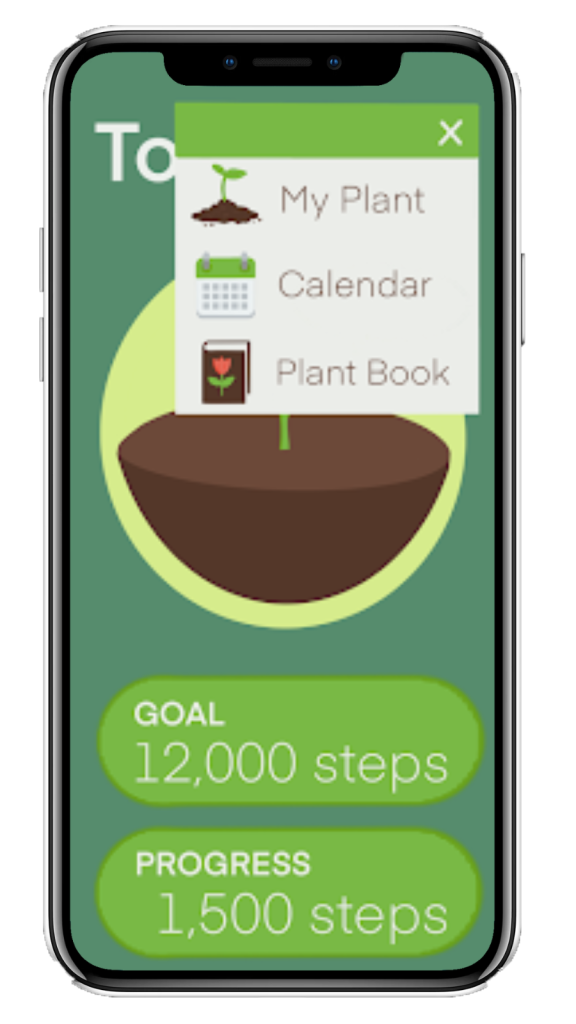
Dropdown Menu
View today’s plant, overall calendar spread, or plant book
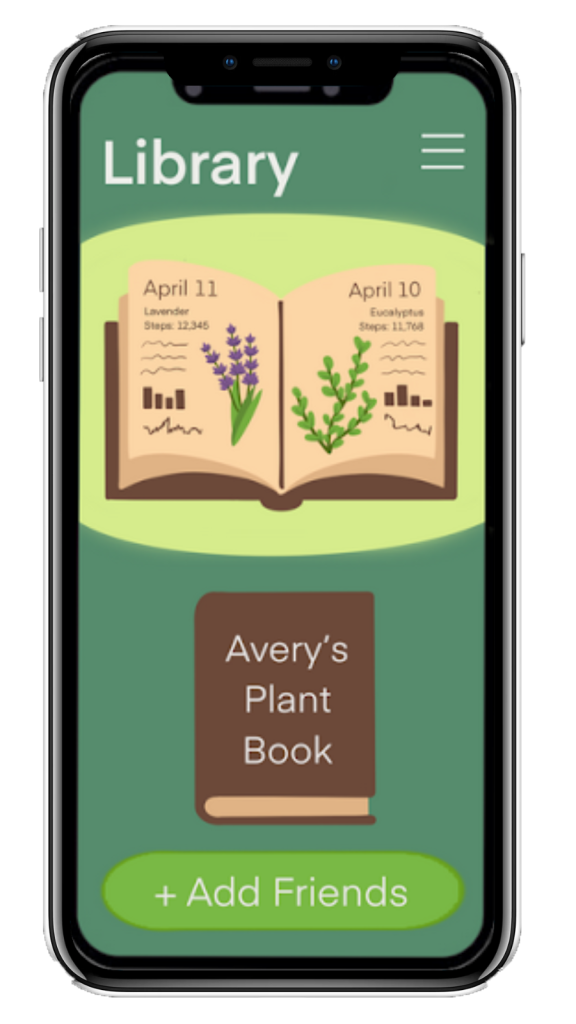
Your Plantbook
See all past plants that have grown and view friends’ plant books
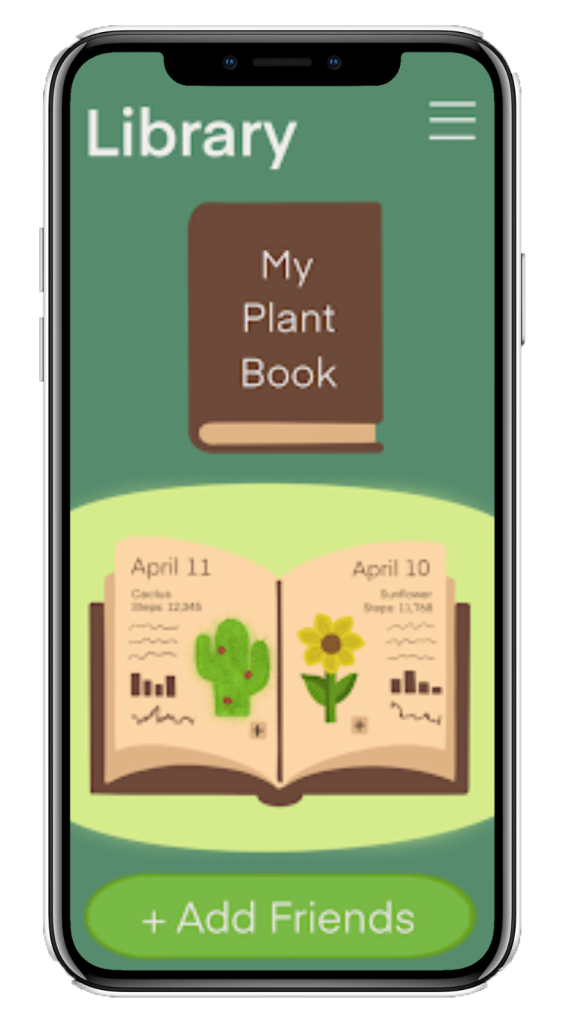
Friend’s Plantbook
View friends’ plantbooks and connect with new friends
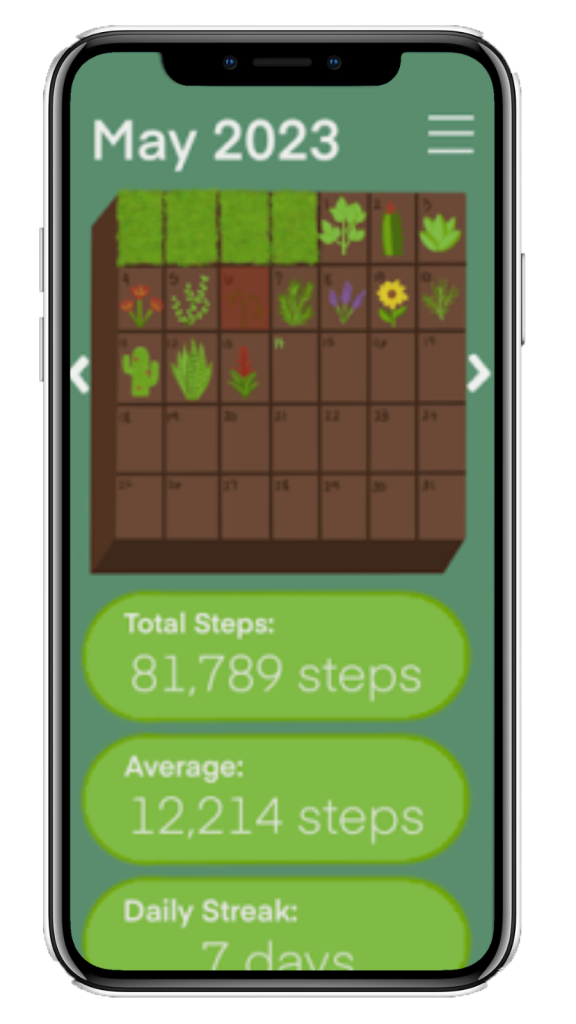
Calendar
Keep track of weekly goals, progress, and monthly plant growth
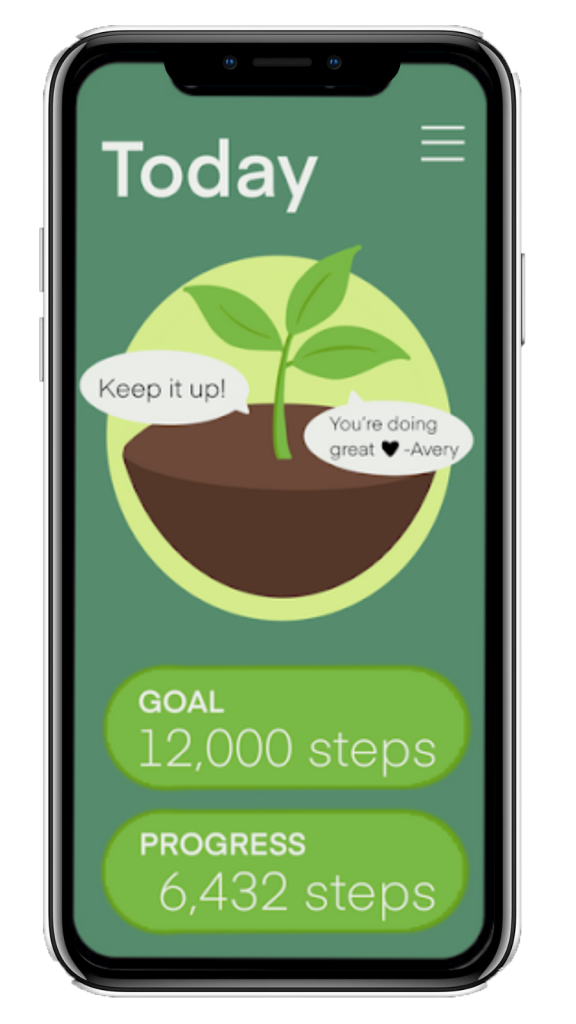
Homepage
Today’s plant and friends send encouraging messages
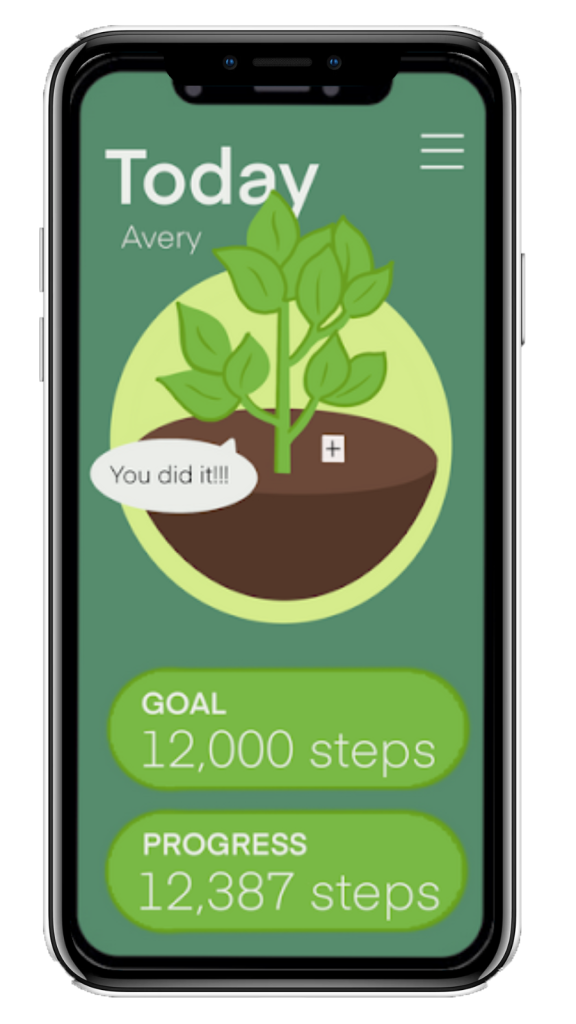
Homepage
Plant blooms once today’s goal has been reached
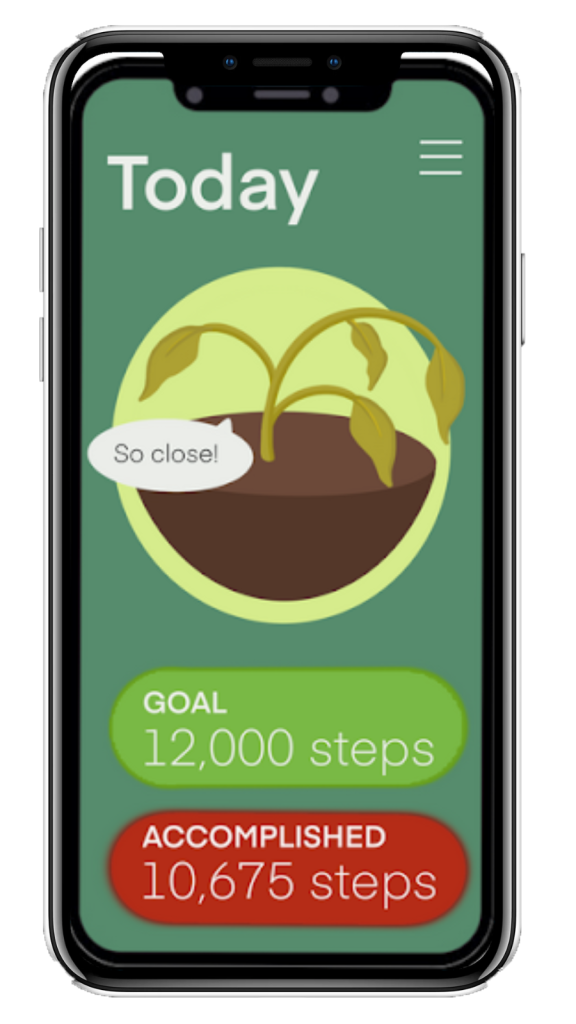
Homepage
Plant wilts, but encourages to try again tomorrow, if goal isn’t reached
Step Garden creates a community for runners who miss running in a high school team. Throughout the day, the plant will begin to grow as the user takes steps. If the daily goal isn’t reached, the plant will wilt. Upon wilting, there will be a positive message sent to the user encouraging them to do better tomorrow. If a plant wilts, a user will have another opportunity to grow that plant in the future.
Evaluation
To evaluate our prototype, I developed a clickable version of our interface for users to navigate.
- Users liked being able to see their progress and the option to see friends’ progress
- Users found the plant’s positive reinforcements appealing

Clickable Prototype
Research
Process & Activities
- Defining User Group
- Empathy Mental Model
- Secondary Research
- Affinity Diagram
- Primary Research
Goals
- How do activity trackers track users’ exercise?
- How do people find enjoyment in trackable technology?
- What mental challenges do people face while exercising?
User Group
Former high school runners that miss the reinforcement and the team environment from high school fitness, and are struggling to maintain a consistent workout routine
Based on the empathy map, we were able to understand our user group’s thoughts and emotions. They are missing a routine, motivation, and social connection in regards to running. The map is divided into four sections; “says,” “thinks,” “does,” and “feels.
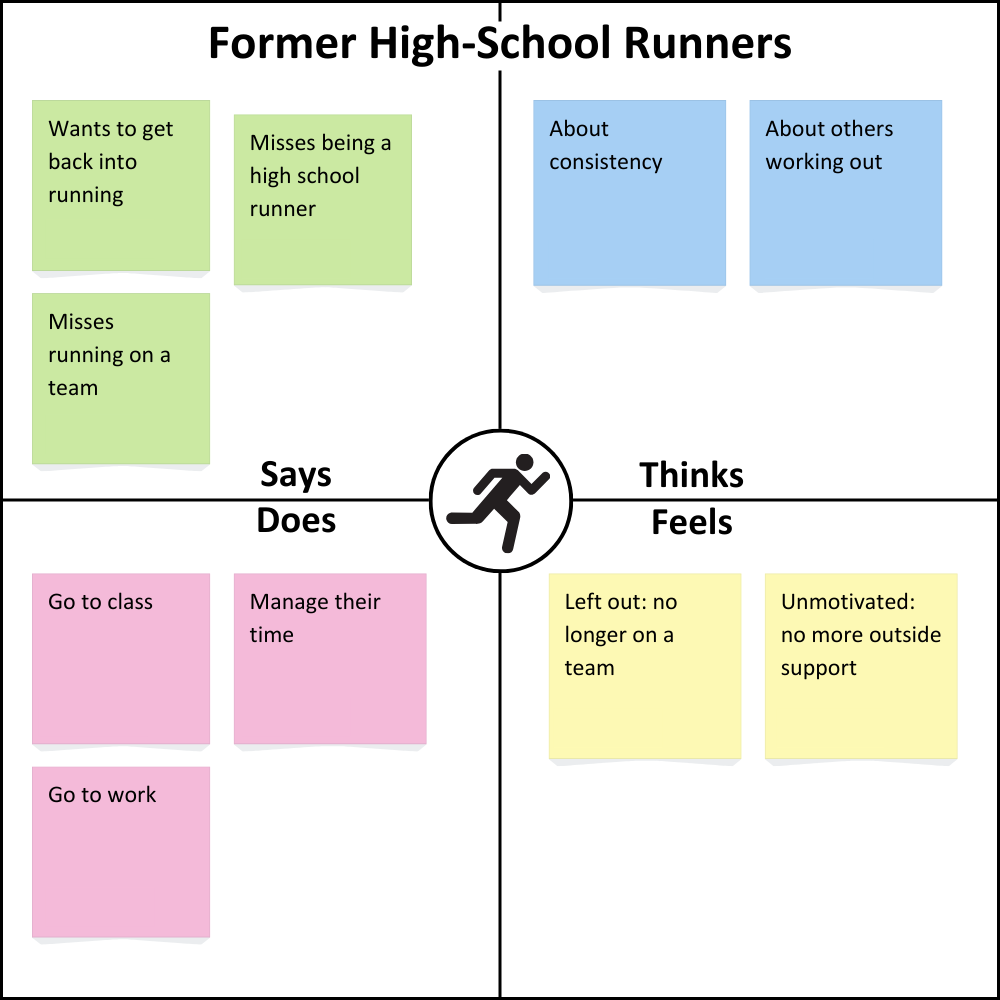
Empathy Map
Secondary Research
Through our secondary research, we found that
- Users are more likely to exercise in a competitive, social environment
- Users are more likely to cheat or give up when they don’t have attainable goals or consistent progress
I organized the findings of our research into an affinity diagram. The findings of our research are sorted into three categories, “logistics,” “barriers,” and “benefits.”
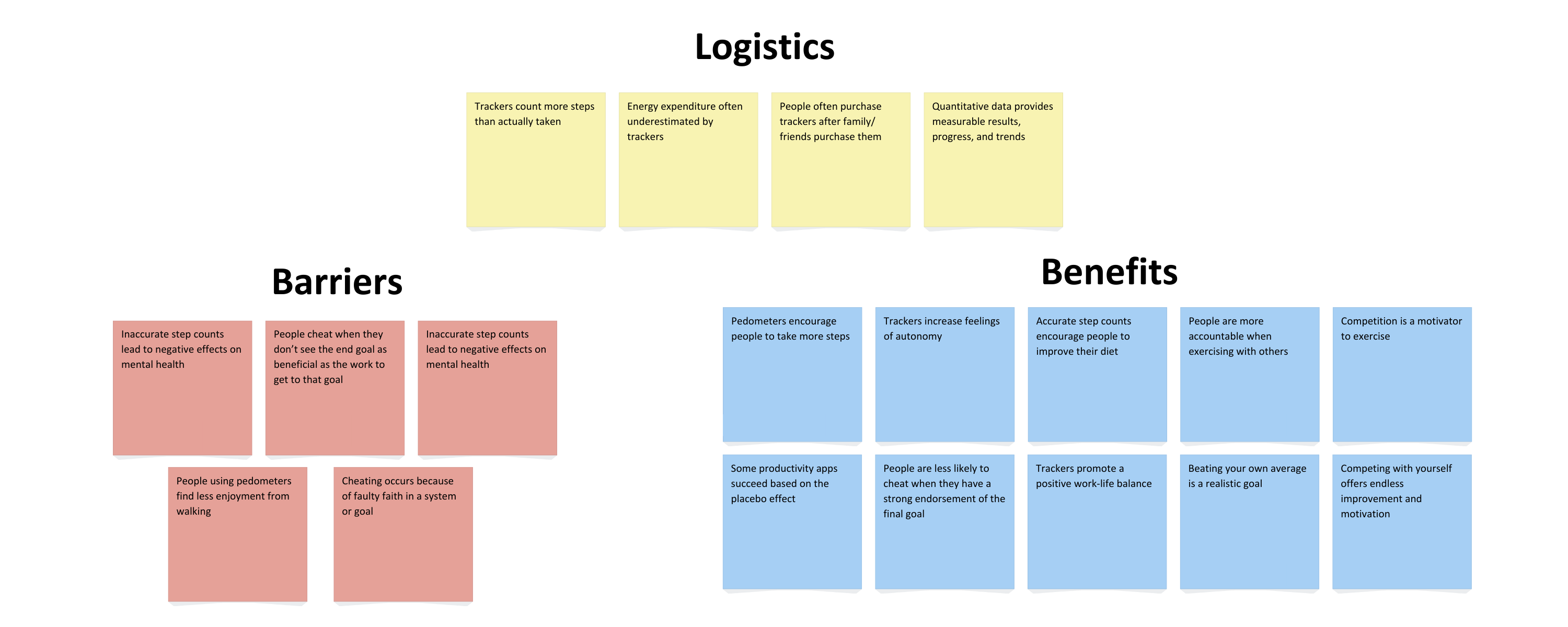
Affinity Diagram of Secondary Research Findings
Primary Research
Our team interviewed former high school runners to understand how they utilize existing fitness trackers, interact with other runners, and what challenges they face while exercising.
- Working out with others can provide encouragement, but can also add external pressure when working out. If a user isn’t keeping up with others, they feel discouraged or encouraged to cheat at the workout
- Users prefer to use their existing trackers, most built into a watch they wear everyday, and would not want to purchase a new tracker
- It can be difficult to find time in a busy schedule to workout and to stay motivated after a long day of work
Development
Ideation
The following mental model helped us understand the problems that our potential users face when creating a consistent fitness routine. We used this model to develop potential solutions to our users’ unique problems.
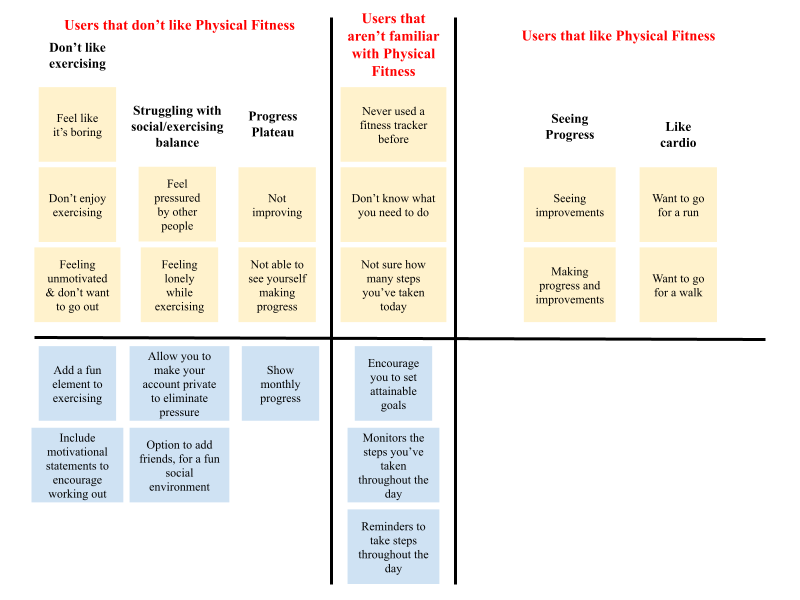
Skyscraper Mental Model
Based on our research and mental models, our team sketched potential programs that would encourage users to maintain a healthy lifestyle using wearable trackers. Our original sketches focused on a competition based app that allowed runners to socialize and compare the number of steps they take each day.
Our secondary sketches focused on personal challenges rather than social competition. We wanted users to be able to set expectations without pressure from others.
In the storyboard, you can see the app tell the user that they have almost reached their goal for the day. The app acts as reinforcement for the user to continue working out until they’ve reached their goal.
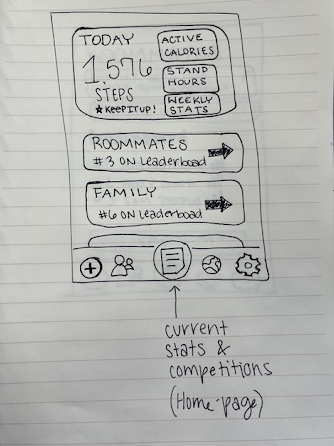
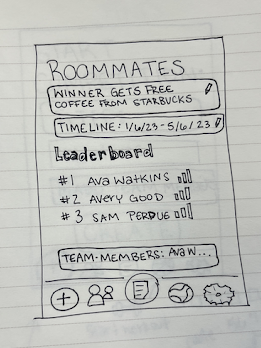
Preliminary Sketches
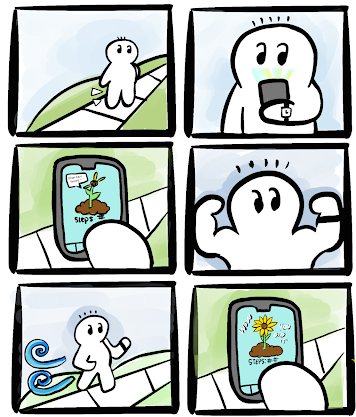
Storyboard
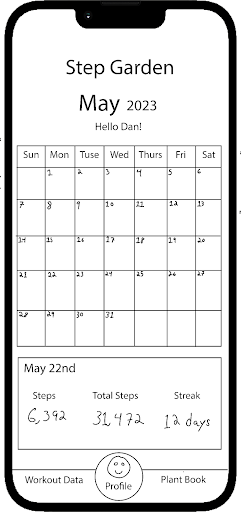
Secondary Sketch
Project Details
Team
- Allie Nolan
- Eddie Overmyer
- Ava Watkins
- Colton VanOverbergh
3 weeks | Mar 2023-Apr 2023
St. Mark’s Preschool
Modernizing the St. Mark’s Preschool online experience
Jan 2025-May 2025
Goodreads Redesign
Goodreads reimagined for the modern reader.